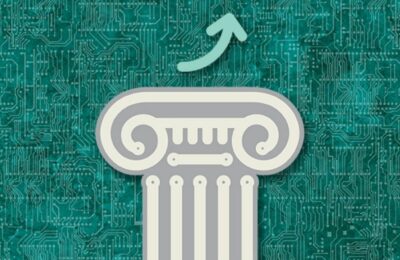Increasing Student Retention and Completion on Campuses Around the Country

This blog post is part of a series discussing critical aspects of the Educause report “Top 10 IT Issues 2020: The Drive to Digital Transformation Begins.”
One of the unfortunate realities of higher education is that not everyone who enters the academy leaves with a degree. The percentage of students who drop out and never receive a diploma varies among institutions, but at nearly every college and university in the country, it’s considered a serious problem.
Educause’s report on the top 10 IT issues of 2020 highlights this problem, ranking it as the number six issue in their report. Of course, this report was released before the COVID-19 pandemic moved most higher education online—exacerbating the problem of student retention even further.
Now, you may be wondering why Educause would list student retention and completion as an “IT issue” when it seems to be more about studying, test-taking, and writing papers – the things students actually do to graduate.
The reason is simple: early intervention for students who are struggling is one of the best ways to increase retention and graduation rates. And by using machine learning, institutions can greatly increase their chances of figuring out which students are at risk, intervening early, and keeping them on the path to graduation.
How Data Fuels Early Intervention
Every year, higher ed institutions collect immense amounts of data on both current and prospective students. Courses completed (in both high school and college), courses dropped, grades, test scores, and more are all at the institution’s fingertips. Too often, however, this data goes unused or underutilized.
However, by using machine learning, schools can begin to use all that data to discern patterns and understand the risk profiles of individual students given their course load and past experiences.
For instance, N2N’s Lighthouse Student Success Module creates student profiles based on their data, providing their institution with their risk percentage in different subjects, as well as course recommendations based on the student’s profile, course complexity, and behavioral factors.
Humans and AI Working in Tandem
 Obviously, the final decision will be made by the student in consultation with their academic advisor. But by empowering the advisor with information related to each individual student’s risk factors given a specific course load, Lighthouse helps stop issues with retention before they arise.
Obviously, the final decision will be made by the student in consultation with their academic advisor. But by empowering the advisor with information related to each individual student’s risk factors given a specific course load, Lighthouse helps stop issues with retention before they arise.
For example, take a student who had a tough time with their courses last semester, and is loading up with more high-complexity courses this semester. They’re at an increased risk for burnout, and another bad semester might stop their academic progression altogether. If the advisor has Lighthouse at their disposal, they’ll see all of this clearly in the Risk Module. They’ll also be able to recommend swapping a high-risk course (or two) with one that does a better job balancing the student’s schedule and, critically, gives them the best chance to be back at school next year.
High student retention and graduation rates aren’t just good for students and schools—they’re good for society in general. At N2N, we believe in making sure as many students as possible leave college with a diploma.
If you’re ready to talk about how we can help your institution achieve that goal, contact us today at (888) 651-3309.


